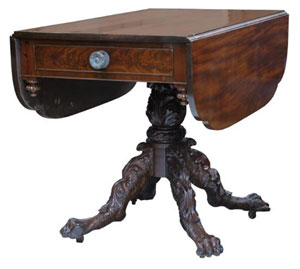
Ancient civilizations took the creature feature to a higher level bringing examples of them into the home in three-dimensional forms incorporated into furniture. Abundant examples of Egyptian furniture have been discovered that reveal chair legs ending in the paws of a lion. One example that is at least 3,000 years old is in the British Museum. The basic form of the Egyptian bed remained unchanged for 2,000 years. Most of them had legs in the form of animal extremities ranging from heavy bull’s legs with hooves to elegant and graceful gazelle legs to feline legs with paw and claw. This last example perhaps was in keeping with the use of panther hides as bed coverings.
The Assyrians likewise kept their animals close and a little later so did the Greeks. In fact some Greek furniture showed an amazing similarity to Assyrian objects in the use of heads, legs and feet of lions, leopards and sphinxes as furniture parts. And, of course, anything the Greeks could do the Romans could do better – at least for a little while until it all crumbled in the fifth century.
From then until the Middle Ages furniture decoration seemed to be either abstract or religious. With the arrival of the Renaissance, furniture decoration turned from religious to classical and in 16th century France the Greek form of the caryatid, a female figure, sometimes with wings, used as a column, was revived but for the most part animal figures were left out.
It was not until the middle of the 18th century that Thomas Chippendale reintroduced the animal figure with the use of a long beaked fictional bird in his mirror frame design. His eclectic mix of French Rococo with Oriental architecture seemed the perfect place to use another piece of Orientalia, the claw and ball foot. This feature brought the dragon into Western furniture because the ball and claw represented the dragon clutching a pearl from oriental mythology.
From there the barn door was open and animals returned to our furniture, slowly at first but with increasing speed and popularity until the turn of the 20th century. We even have learned to call some of our woods by animal names like “tiger oak” and “bird’s-eye maple.” Here are few examples of animal figures in 18th and 19th century American furniture.
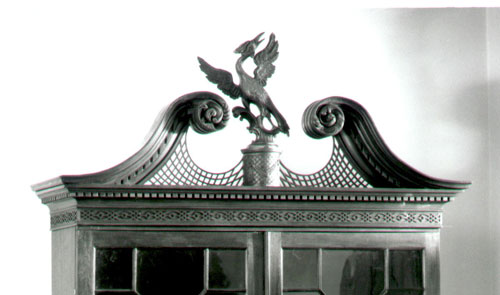
Phoenix – The phoenix was bird that lived for 500 years and then was reborn from its funeral pyre. This phoenix atop an 18th century bookcase secretary is a modern reconstruction based on the original.
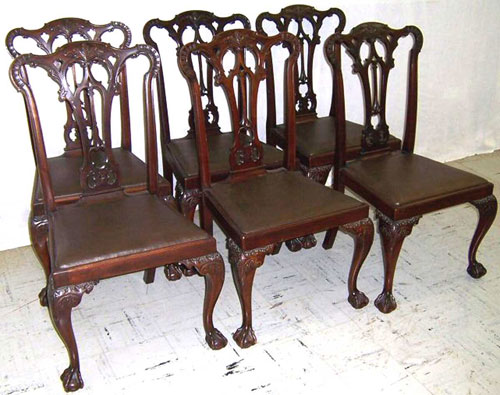
Chippendale – The feet on these Centennial Chippendale-style chairs clearly show the dragon’s claw clutching the pearl.
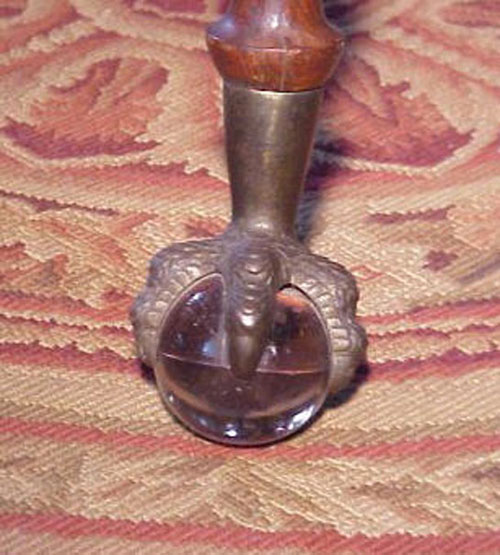
Claw – This turn of the 20th century interpretation of the claw and ball foot was featured on piano stools and parlor tables of the period.
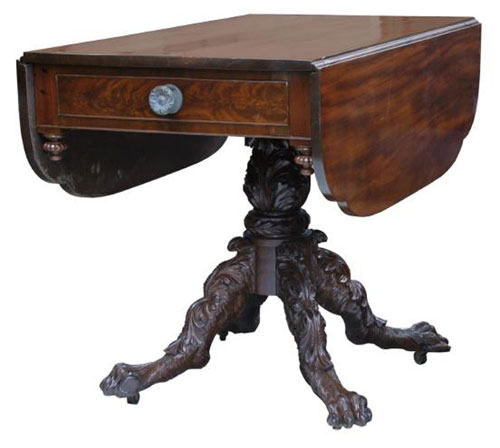
Paw foot – The hairy paw foot is an integral part of the ambiance of this Empire drop-leaf table.
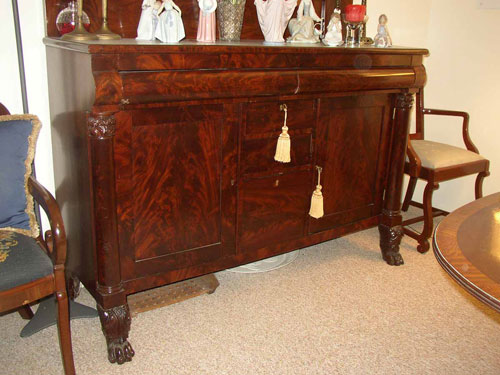
Heavy paw foot – A heavier paw foot can be seen supporting the weight of this Empire sideboard.
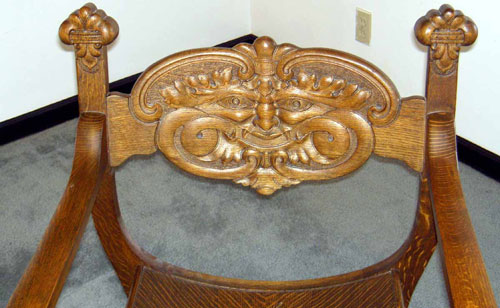
Face chair – A whole collection of chairs in the late 19th century called face chairs were decorated with unidentifiable creatures simply called grotesques.
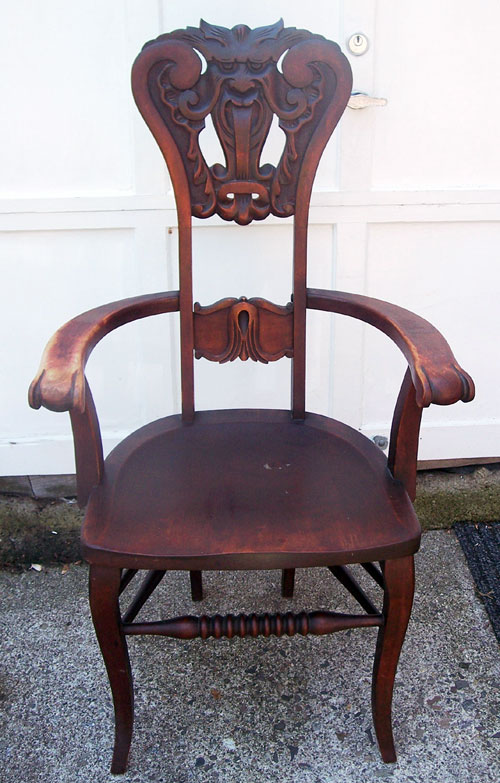
Grotesque – This grotesque easily recalls the image of a devil.
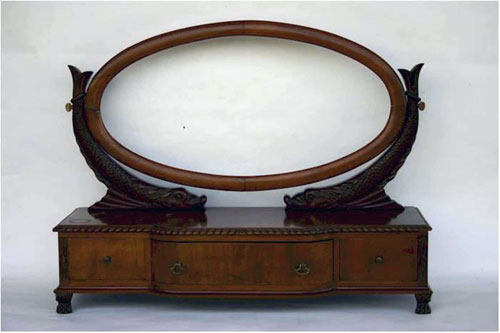
Dolphins – Sea creatures referred to as dolphins support the mirror of this late 19th century shaving mirror. The stand is raised on paw feet.
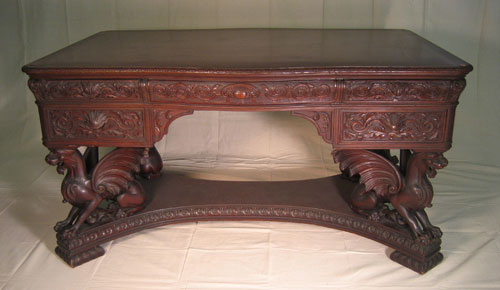
Griffin – One of the most popular figures of the late 19th century was that of the mythological creature the winged griffin from Assyrian, Egyptian, Roman and Greek mythology. R.J. Horner carved these creatures but many others including Mitchell & Rammelsberg also used the figures.
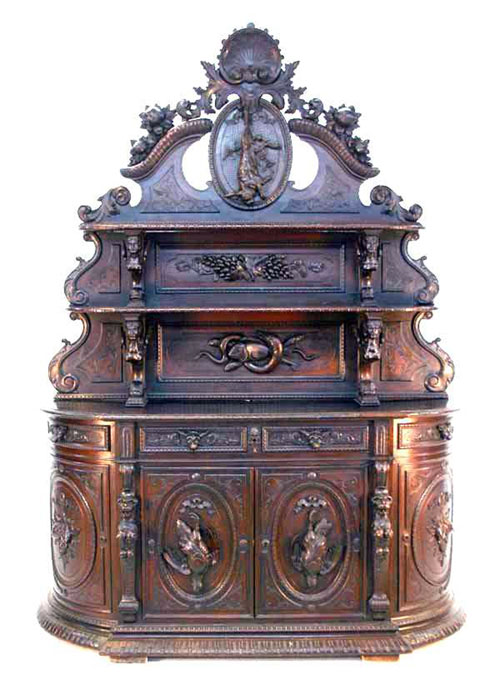
Sideboard – Perhaps the single greatest use of animal figures can be seen in this sideboard of the third quarter of the 19th century. It is an American piece but it is based on the European design of Frenchman A.G. Fourdinois displayed at the Crystal Palace in London in 1851. It celebrates the elements required to place food on the Victorian table. The original sideboard is illustrated in and is the central focus of the book Death in the Living Room and Other Tales of Victorian Culture by Kenneth Ames, formerly of Winterthur, published by Temple University Press.
This sideboard is replete with deer, fish, grapes, grain and fowl, and the bounty is guarded by lions on the columns. (Grandview Antiques and Auction)
Send your comments, questions and pictures to Fred Taylor at P.O. Box 215, Crystal River, FL 34423 or ftaylor5@tampabay.rr.com. Visit his Web site at www.furnituredetective.com.
Fred Taylor is a freelance writer based in central Florida, who earned both a bachelor’s and master’s degree in finance from the University of Florida. While he is perhaps better known in his role as a nationally syndicated columnist on the subject of antique furniture, he is interested in almost all things related to Florida. He has covered many auctions both inside and outside the Sunshine State for leading antiques trade publications. Fred and his wife, Gail, love to travel Florida’s highways and byways on a Harley-Davidson motorcycle.

